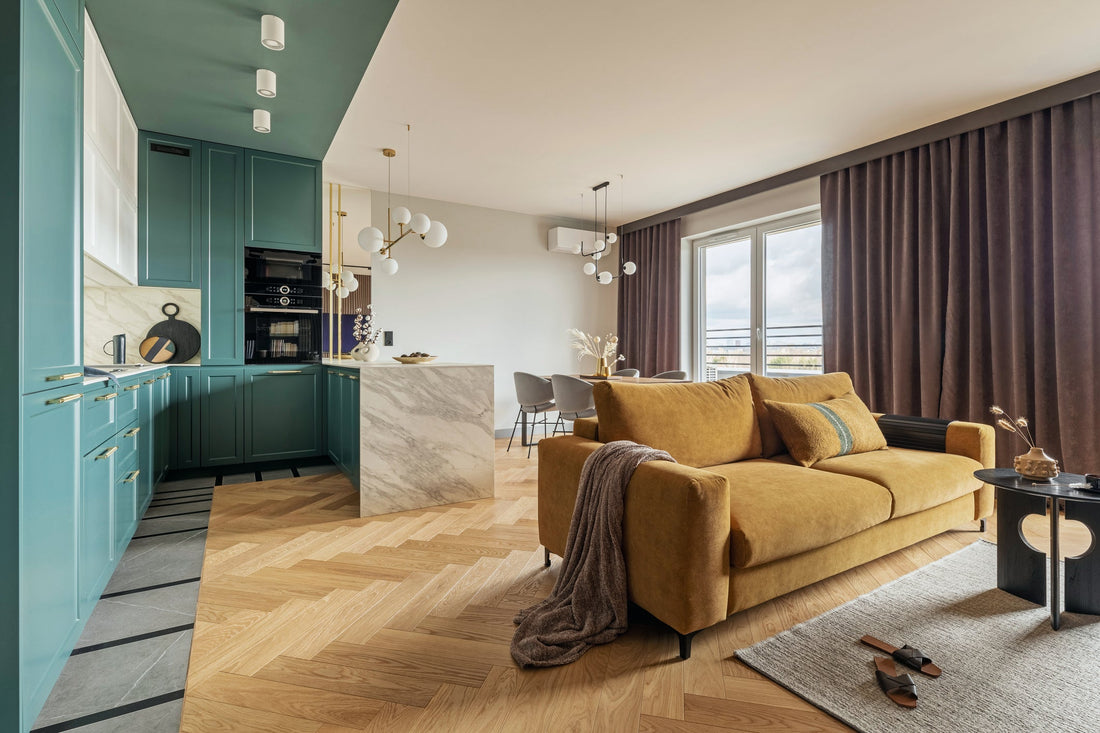Vinyl flooring is one of the easiest floors to lay – even easier than laminate. A beginner can lay vinyl, but it’s important to learn the key steps to minimise waste and guarantee a professional-looking floor.
Keep reading for a quick and easy step-by-step guide on how to install vinyl flooring in your home.
How to Install Vinyl Flooring: A Beginner’s Guide
Here’s a quick and easy step-by-step guide (suitable for beginners) with everything you need to know to install luxury vinyl flooring at home:
-
Let the planks acclimate: Leave the luxury vinyl planks in the room where they will be installed for 24 hours to allow for expansion.
-
Prepare the surface: Remove any previous flooring. Hoover the area. If the subfloor is uneven, use a self-leveling compound to level it.
-
Lay underlay: Choose between cork, foam, felt, particleboard, rubber, or plywood underlay. Some vinyl has a pre-installed padding beneath the plank, which can replace the need for underlay. But you can add underlay if you want more comfort or soundproofing.
-
Leave a gap: Use floor spaces to leave an expansion gap around the perimeter of the room (just like how you’d lay laminate flooring).
-
Install the first plank: Leave the gap and lay the plank along the wall. Most people lay vinyl in line with the way the light enters the room.
-
Click planks together: Continue securing the planks along the wall.
-
Cut the planks: When you reach the end, you’ll need to make your first cut. Use a straight edge and score the plank with a Stanley knife.
-
Cut your first plank on the second row: Luxury vinyl planks should be laid staggered to promote better structural integrity. Cut the first plank in half. Make sure you don’t cut the end with the click join.
-
Continue clicking the boards together: Keep going with laying planks and clicking these tightly together, and cutting when you reach the end of the row.
-
Lay a full-length plank on the third row: To continue the staggered pattern, make sure you lay a full-length plank on the third row.
-
Repeat: Continue this until all the planks are laid. Don’t forget to use floor spacers on both sides of the wall to keep the perimeter gap.
-
Install skirting board or trim: Once the floor is fully laid, you can lay trim (or Scotia board) over the gap or, if you’re also replacing the skirting board, lay the skirting board to cover the gap.
FAQs
Can a Beginner Install Vinyl Flooring?
Yes, installing luxury vinyl flooring is one of the easiest types of floors to DIY, even if you’re a beginner. Usually, you don’t need any underlay (as it can come pre-attached).
Provided you know how to measure a floor and make cuts safely, you can simply use a Stanley knife to cut the planks before clicking them together.
Is It Worth It to Install Your Own Vinyl Flooring?
Since vinyl flooring is easy to lay, it’s definitely worth learning how to install vinyl floors yourself.
By installing your own vinyl, you’ll significantly reduce labour costs and can have the floor installed quicker than if you wait for a professional to install it for you.
However, if you aren’t very confident with DIY, it isn’t worth the risks. Making the wrong cuts can lead to unnecessary waste. Plus, if you install it incorrectly, it may look uneven or be susceptible to water damage.
Find a professional installer in Manchester today to guarantee a strong, secure finish for your flooring.
Shop Luxury Vinyl Flooring Today
Ready to install luxury vinyl flooring in your home? Shop our collection of high-quality, easy-to-lay luxury vinyl flooring in the UK in our popular colours.
Need a hand? No problem! Our installers can have luxury vinyl flooring installed quickly and professionally in your home. Find a flooring fitter in Manchester today.



